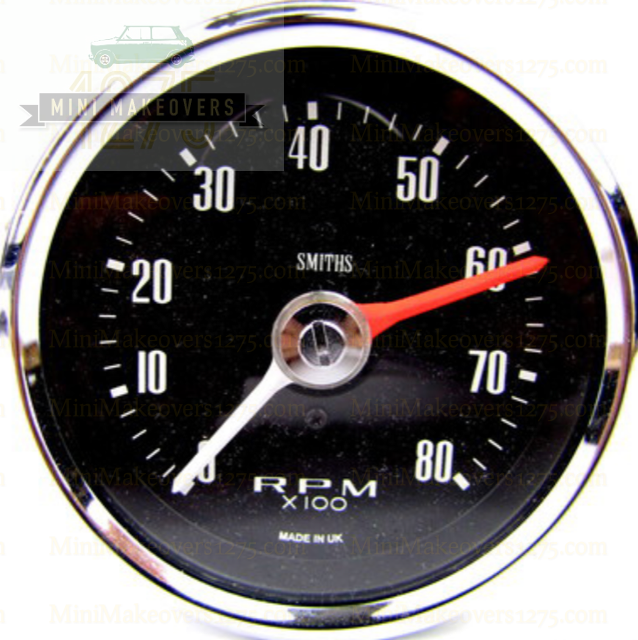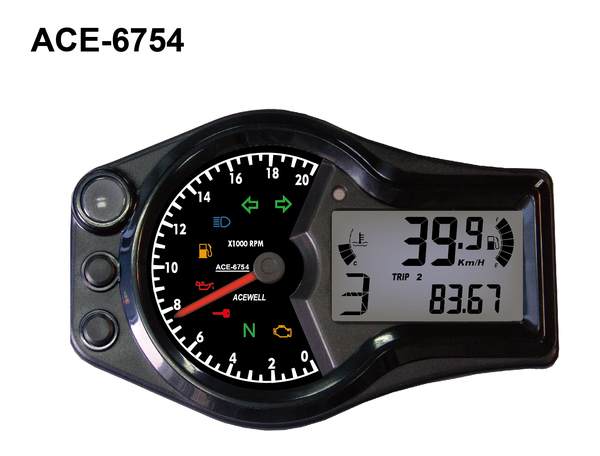Professional Tips for Keeping and Adjusting Your Tachometer
Professional Tips for Keeping and Adjusting Your Tachometer
Blog Article
Exploring the Features and Advantages of a Tachometer: A Comprehensive Guide for Automobile Enthusiasts
In the realm of automobile instrumentation, the tachometer stands as a crucial tool that supplies vehicle drivers important understandings right into their vehicle's performance. tachometer. From supplying real-time data on engine rate to assisting in optimizing equipment changes, the tachometer functions as greater than simply a dial on the control panel. Its complex features not just improve driving experience but likewise play a pivotal function in keeping engine wellness and efficiency. As we look into the intricate workings and advantages of a tachometer, a much deeper understanding of its significance for vehicle lovers and professionals alike will unravel.
Comprehending the Fundamentals of a Tachometer
In the realm of vehicle instrumentation, understanding the basics of a tachometer is necessary for any kind of car lover wanting to look into the ins and outs of engine efficiency surveillance. A tachometer, often shown on the dashboard of an automobile, determines the engine's revolutions per minute (RPM) This crucial tool offers real-time data on how quick the engine crankshaft is turning. By monitoring the RPM, vehicle drivers can guarantee they are operating within the ideal variety to make the most of performance and effectiveness.
Tachometers generally have actually a range noted in changes per minute, with a redline indicating the optimum speed at which the engine can securely operate (tachometer). This info is crucial for preventing engine damages and enhancing gear moving for hands-on transmissions. Additionally, tachometers can assist in diagnosing engine concerns such as misfires or a failing ignition system by identifying irregular RPM readings
Value of Monitoring Engine Rate

Monitoring engine speed is a crucial element of lorry upkeep and efficiency optimization for vehicle enthusiasts and experts alike. The engine speed, determined in changes per min (RPM), indicates just how quickly the engine's crankshaft is turning. By maintaining a close eye on the RPM, motorists can make certain that the engine is running within the optimum variety, stopping potential damages from over-revving or delaying. Keeping an eye on engine rate is specifically important during gear changes, as it assists vehicle drivers identify the ideal time to alter gears for smooth velocity and effective gas consumption.
Additionally, tracking engine speed can additionally give useful understandings into the overall health and wellness of the automobile. Unusual fluctuations in RPM may show problems such as a stopped up air filter, gas system problems, or perhaps engine misfires. By identifying these abnormalities at an early stage via the tachometer analyses, drivers can deal with prospective problems quickly, stopping extra serious damage and expensive fixings down the line. In general, checking engine speed with a tachometer is an essential Read More Here method that can improve driving performance, extend engine life, and make certain a safer and much more satisfying driving experience.
Enhancing Efficiency Via Equipment Shifts
Enhancing performance via strategic equipment shifts is a crucial element of making best use of a car's performance and power output. Proper gear shifting makes certain that the engine operates within its optimum power band, permitting for smooth velocity and improved gas economic climate. When moving equipments, it is crucial to take note of the engine speed showed on the tachometer. By checking the engine revolutions per minute (RPM), motorists can establish the most opportune minutes to upshift or downshift for ideal efficiency.

To achieve peak efficiency through gear changes, vehicle drivers need to exercise smooth and prompt shifts between gears, matching engine speed with roadway speed to harness the full capacity of their automobile's powertrain.
Making The Most Of Efficiency With a Tachometer
Grasping the art of equipment shifting in high-performance lorries not only enhances driving experience however additionally plays a critical duty in maximizing performance i loved this with a tachometer. tachometer. By paying very close attention to the tachometer analyses, chauffeurs can optimize their equipment shifts to operate within the engine's most effective range. When accelerating, shifting equipments at the ideal RPM shown by the tachometer can prevent the engine from exhausting or underperforming, resulting in enhanced gas effectiveness and overall efficiency
Additionally, a tachometer assists drivers avoid unnecessary revving, which not only wastes gas yet likewise puts unneeded strain on the engine. Consistently monitoring the tachometer while driving permits smoother gear shifts, lowering damage on the transmission system with time.

Advanced Tips for Tachometer Application
To dig into advanced pointers for tachometer use, consider integrating the use of change lights. Change lights are aesthetic indicators that Clicking Here illuminate when it's time to shift equipments based on engine transformations per min (RPM), enabling for seamless gear changes without regularly keeping an eye on the tachometer. By fine-tuning change points and setting warning limits, chauffeurs can maximize velocity and engine efficiency while decreasing the danger of over-revving.
Final Thought
Finally, the tachometer serves as a crucial tool for vehicle enthusiasts to check engine speed, boost efficiency through equipment shifts, and make best use of performance. By recognizing the functions and benefits of a tachometer, vehicle drivers can optimize their driving experience and lengthen the lifespan of their vehicle. Making use of sophisticated pointers for tachometer usage can further enhance driving abilities and general performance when traveling.
Report this page